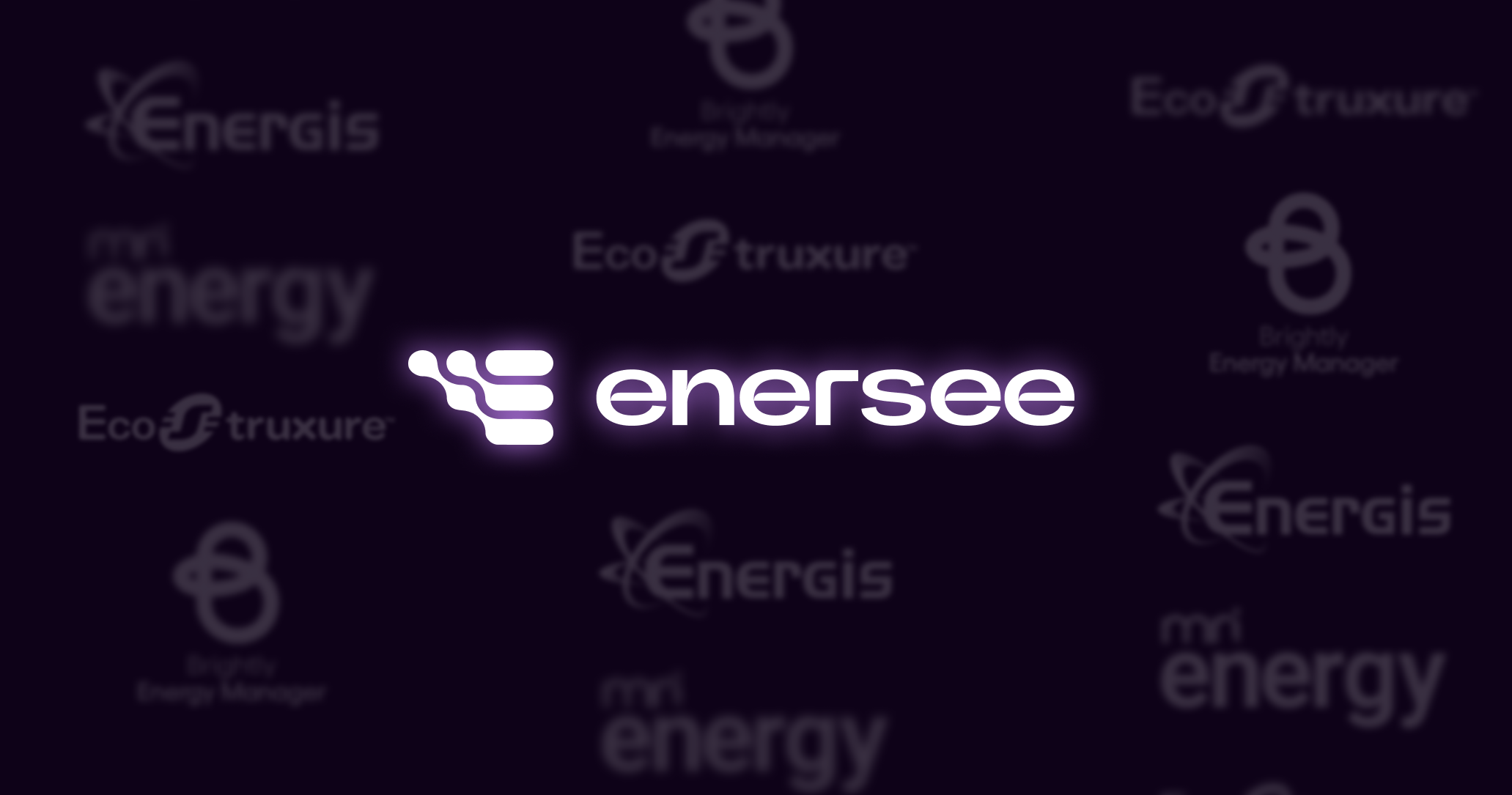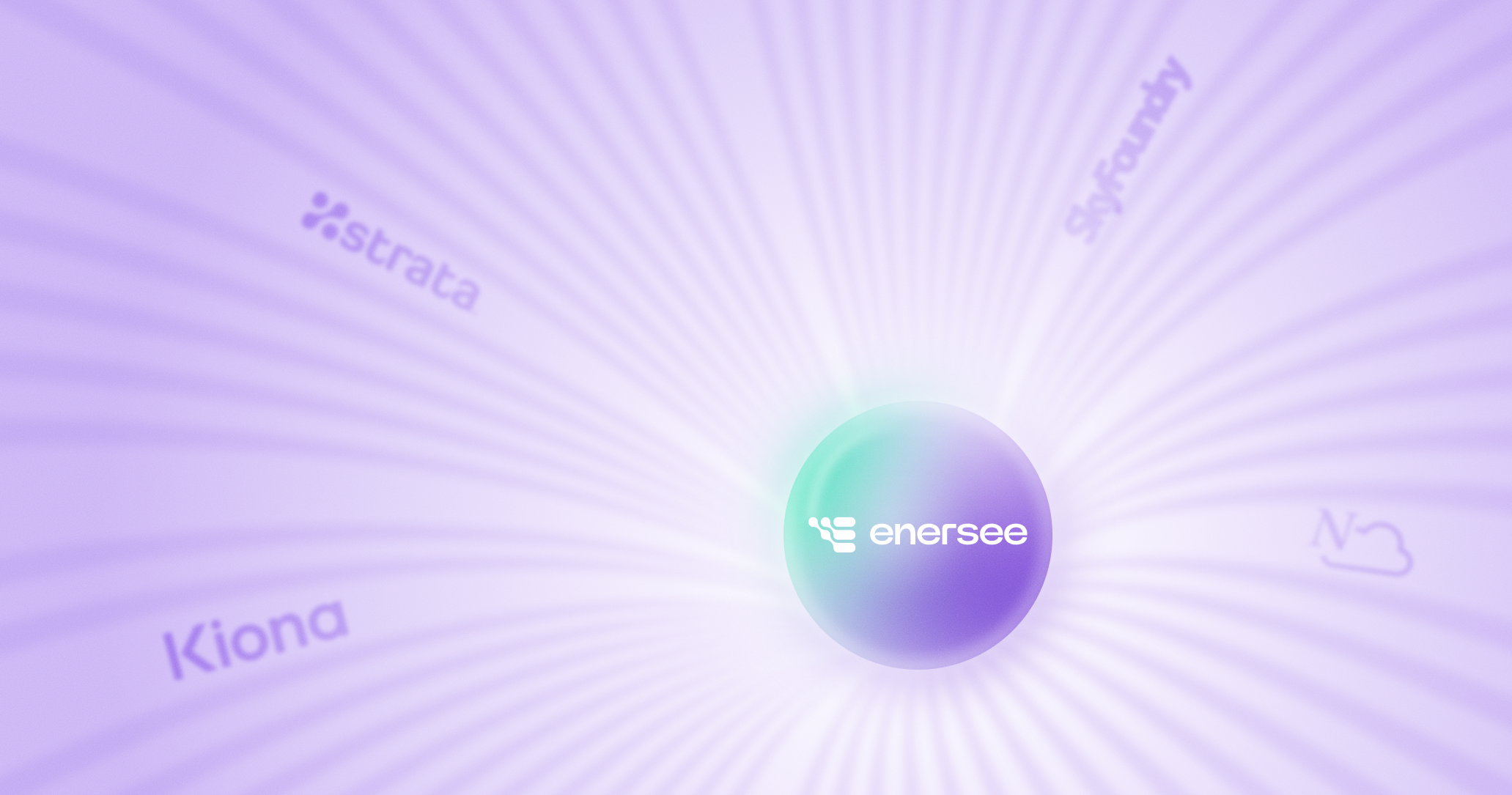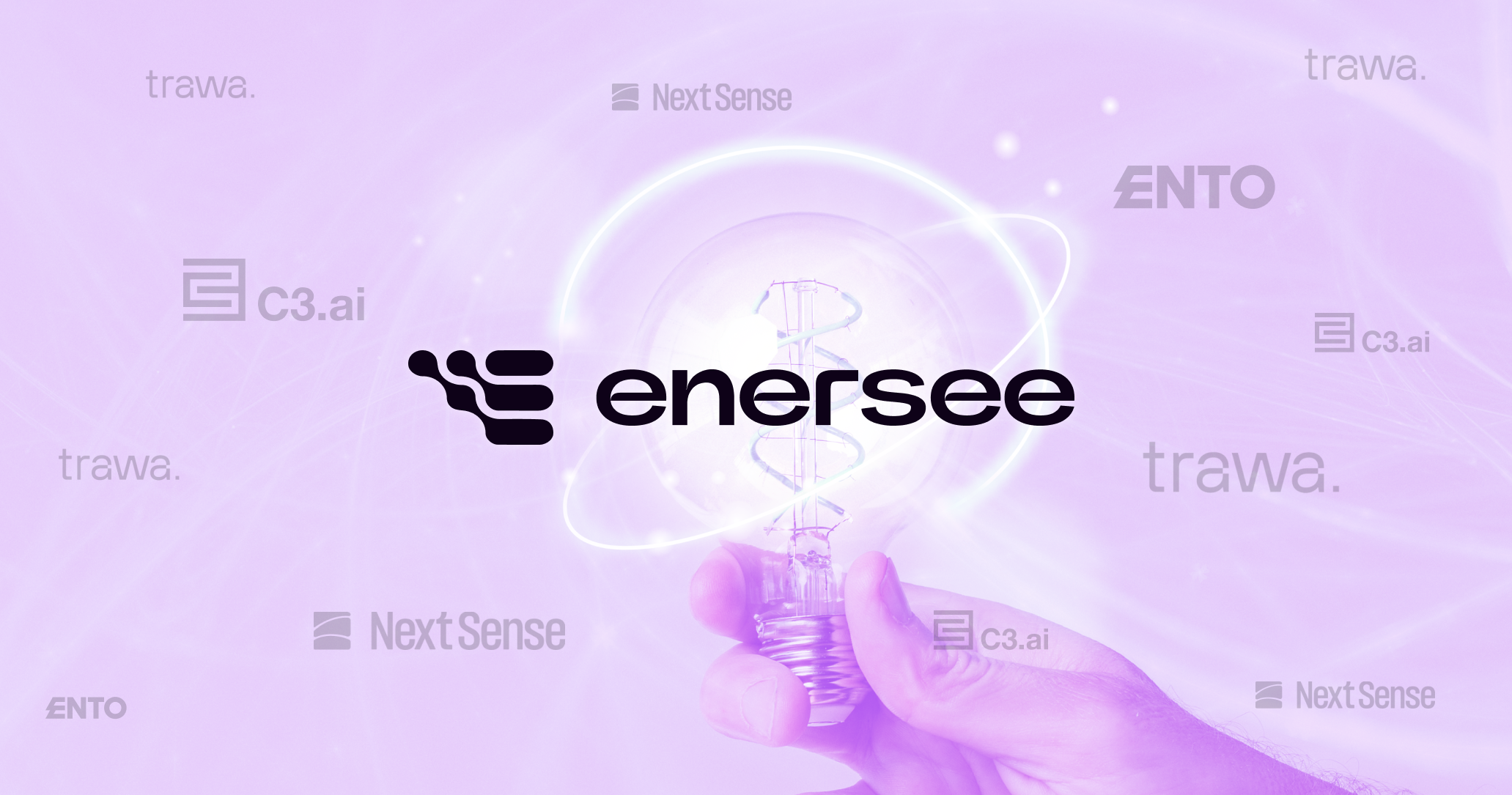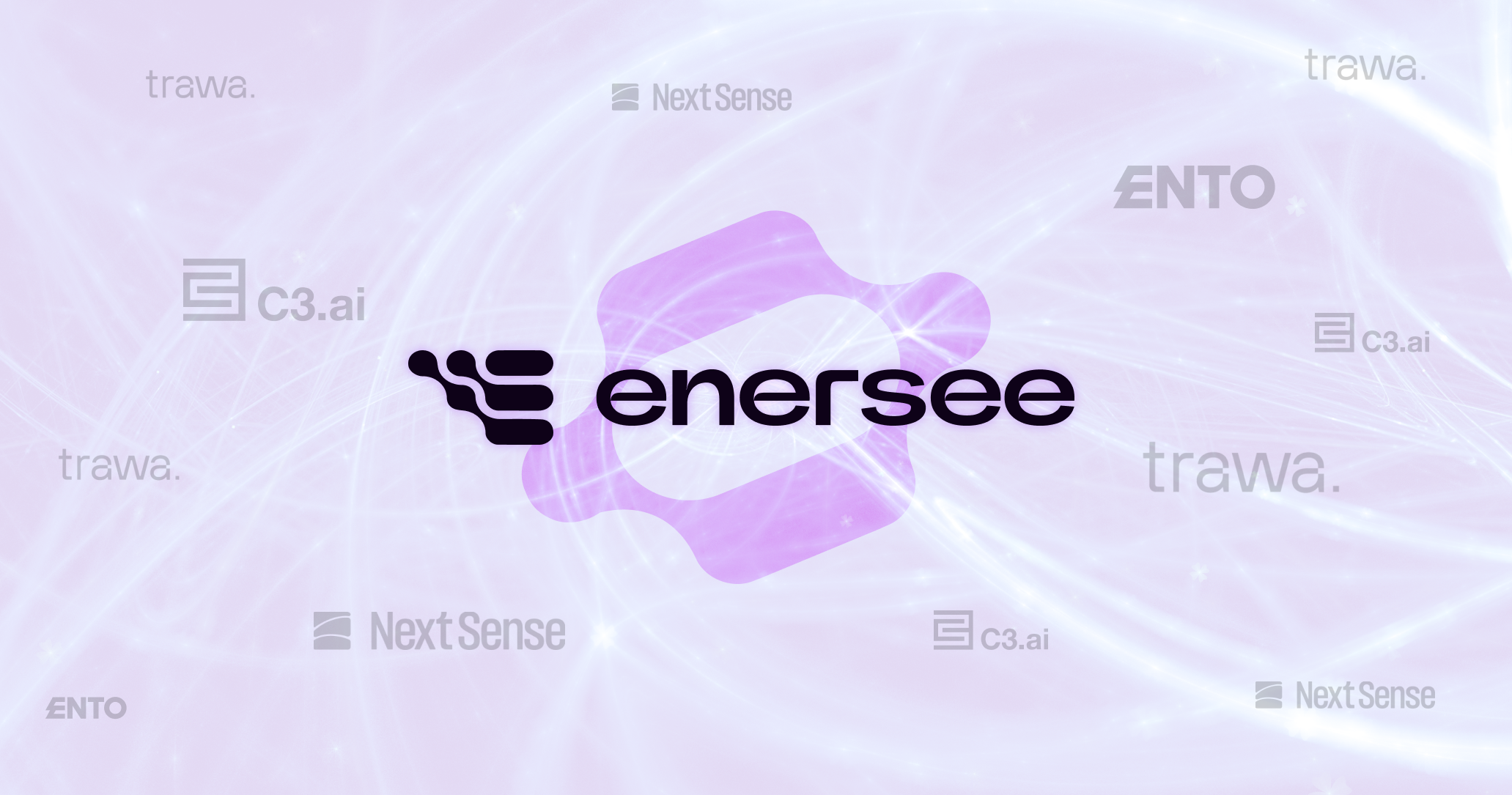Lower energy costs, operational efficiency, and minimal environmental impact. These are the main benefits organizations see when using an advanced energy management system (EMS).
Not convinced? An analysis that looked at over 300 case studies from 40 countries found that organisations with energy management systems achieved an average of 11% in energy savings within the first year of implementation. Some achieved 30% or more. That’s anything but negligible.
The EMS market offers at least a dozen options, if not more. How do you make the best choice? This article will review 5 of the best energy management systems for enterprises and multi-site operators.
We’ll look at what each platform has to offer, its integration options, and what makes each one unique, so that you can make the best decision for your organization.
What is an energy management system?
An energy management system is a set of tools that collect, analyse, and optimize energy data across buildings, plants, or infrastructure. It connects to meters, sensors, and building systems to track consumption patterns, identify inefficiencies, and automate energy-saving actions.
Modern EMS platforms combine IoT, AI analytics, and cloud computing to deliver insights in real time. They support compliance with energy regulations, streamline reporting, and help reduce both energy costs and carbon footprint.
Types of energy management systems
If you do a little research, you’ll notice a lot of things can fall under the EMS umbrella, including software that only controls a battery. That’s not necessarily wrong, but it’s a good example of the wide variety of energy management system types. The most notable ones include:
- Building energy management systems (BEMS). Focused on HVAC, lighting, and space optimization.
- Industrial energy management systems. Designed for factories, focusing on machinery performance and power quality.
- Utility and cost-management platforms. Handle procurement, billing, and budgeting.
- AI-driven optimization platforms. Provide forecasting, anomaly detection, and continuous commissioning.
5 Best energy management systems for enterprise efficiency
A good energy management platform can save you between 10 and 29% in energy use per building. The catch is that you have to choose the right one for your organization.
Because if you’re looking for something to help you with HVAC and space optimization, an EMS that focuses on procurement won’t help you much. Here are five of the best options to consider.
1. Enersee – Best energy management system for enterprise retailers, real estate, hospitality, retirement care, and PE funds

Many times, energy systems make life harder. They send hundreds of alerts, at least half of which turn out to be false, and lead to up to 30% of energy wasted, delayed projects, and compliance risks. Enersee helps you avoid that scenario completely.
As an AI-first energy management platform made specifically for enterprise-scale building portfolios, Enersee uses self-learning algorithms, minimizing the risk of false or minor alerts, saving energy, and money.
It can interpret data from every available source. That includes utilities, weather, metering, occupancy, and other technical data. How else does it help? Its core strengths include:
- It acts as a 24/7 virtual energy manager. If limited in-house resources were ever an issue, Enersee helps you forget about them.
- Uses advanced AI algorithms that can automatically reveal hidden, and often extremely expensive, issues.
- It automates the detection of anomalies and how you address them.
- Comes with smart prioritisation of issues based on impact and urgency. This also means you can save a lot of time and resources. You get to identify issues and act now, not months later.
- Detects required measures (capacity tariffs, BACS, EPCNR), and subsidy opportunities instantly.
- Has a progress tracker that can help you see exactly what’s been happening, what issues existed, consumption patterns, and more.
It has an 85% true positive rate. Fewer false alarms, less time spent chasing problems that aren’t there, while focusing on real ones and saving costs.
A major retailer identified potential savings of €3.5 million annually per 1,000 stores, with the possibility of yearly savings surpassing €40 million if expanded across the whole portfolio.
A user on Capterra says, “Efficient tracking of consumption anomalies. Monitoring of evolution of how energy efficiency projects are performing. Sleek UI. Great support team. As it's purely data-driven, setting it up isn't time-consuming like it would be to set up alarms etc. manually. They got it right: energy management is not about creating 50 dashboards; it's about showing the essential elements necessary to manage energy consumption.”
Enersee is perfect for those managing multi-site portfolios, such as retailers and property operators, and those who want to automate analysis, reduce energy waste, and have better sustainability results.
2. MRI Energy – Good energy management system for real estate and asset management
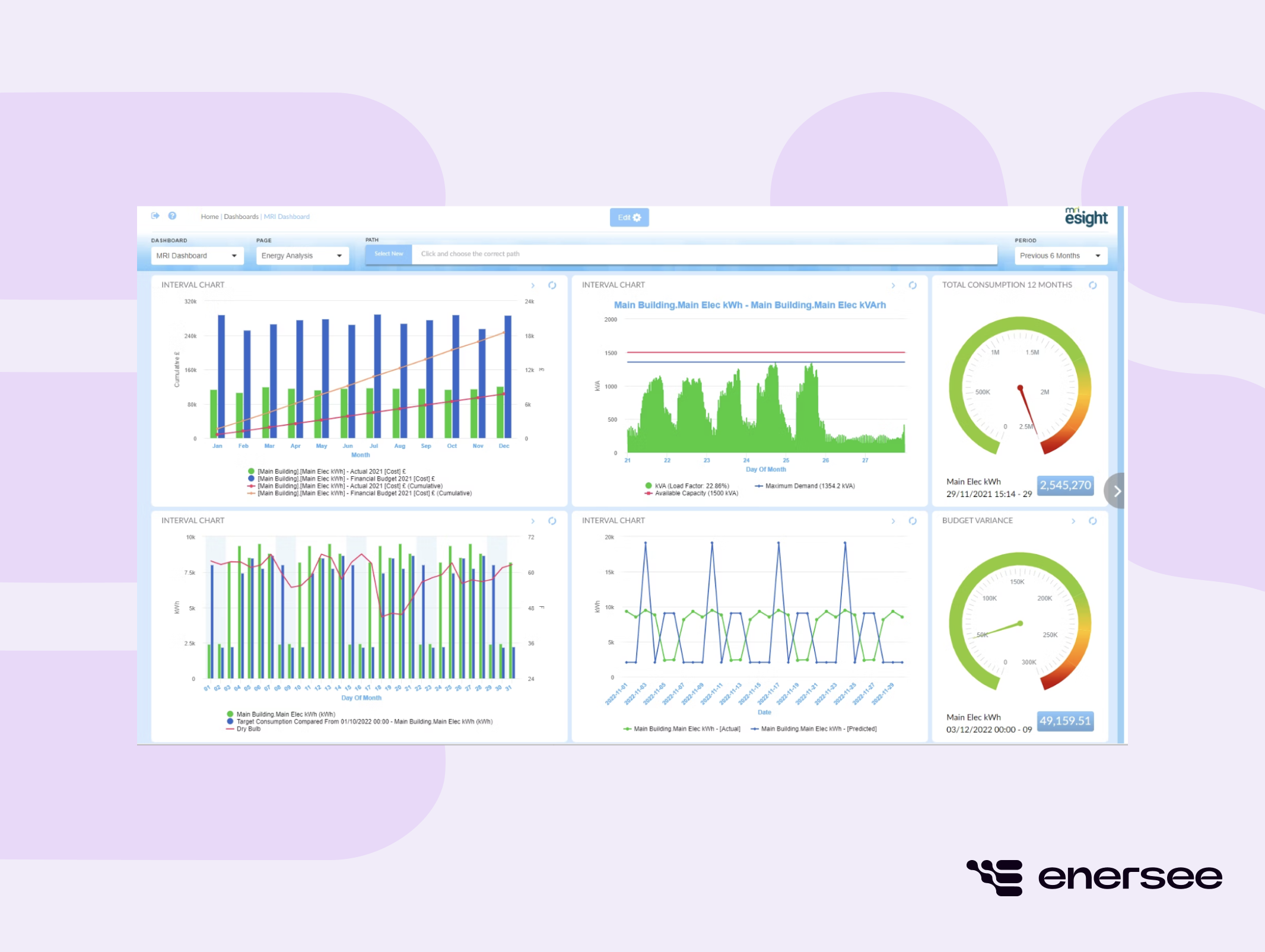
MRI Energy is an energy management solution that gives you total visibility and understanding of your energy consumption patterns.
It comes with centralized dashboards that merge energy, utilities, and sustainability data across assets. It can also integrate with meters and suppliers through automated data ingestion so you always have live updates.
MRI Energy can also compare data between buildings, flagging underperformance. Last but not least, it helps you with sustainability reporting, which means less administrative effort in the long run.
Any organization can use it, but MRI was originally built with real estate companies in mind, so this sector will likely see the most benefits.
Users state that “Features like interactive dashboards, dynamic report generation, alarm configuration and data quality analysis are highly useful.”
There are also some cons. Some users complain that there’s a steep learning curve and that the user interface is not exactly intuitive.
3. Brightly Energy Manager — Best energy management system for small-scale businesses

Most EMS solutions feel made solely with large-scale businesses in mind. Small organizations can still use most of them but may struggle to find a place for all their features. If this description fits your experience with EMS tools, you may want to look into Brightly Energy Manager.
Brightly focuses on utility tracking, benchmarking, and budget forecasting. With it, you can automate data capture from invoices and meters, view project spending trends, and check your progress towards carbon and energy reduction goals.
And if you’re struggling with compliance, understanding all the various regulations and their requirements, Brightly can help you thanks to its comprehensive reporting engine.
The tool is also easy to use and has good support, as one Capterra user points out, “The customer service is top notch, and the available training bank has answered every one of my questions so far.”
Does it have cons? Some exist, yes. Some users report occasional odd bugs that can lead to inconsistent information on reports, while others complain the costs are a little too high relative to the tool’s limitations.
4. EcoStruxure Power Monitoring Expert (Schneider Electric) — Best energy management system for industrial operations
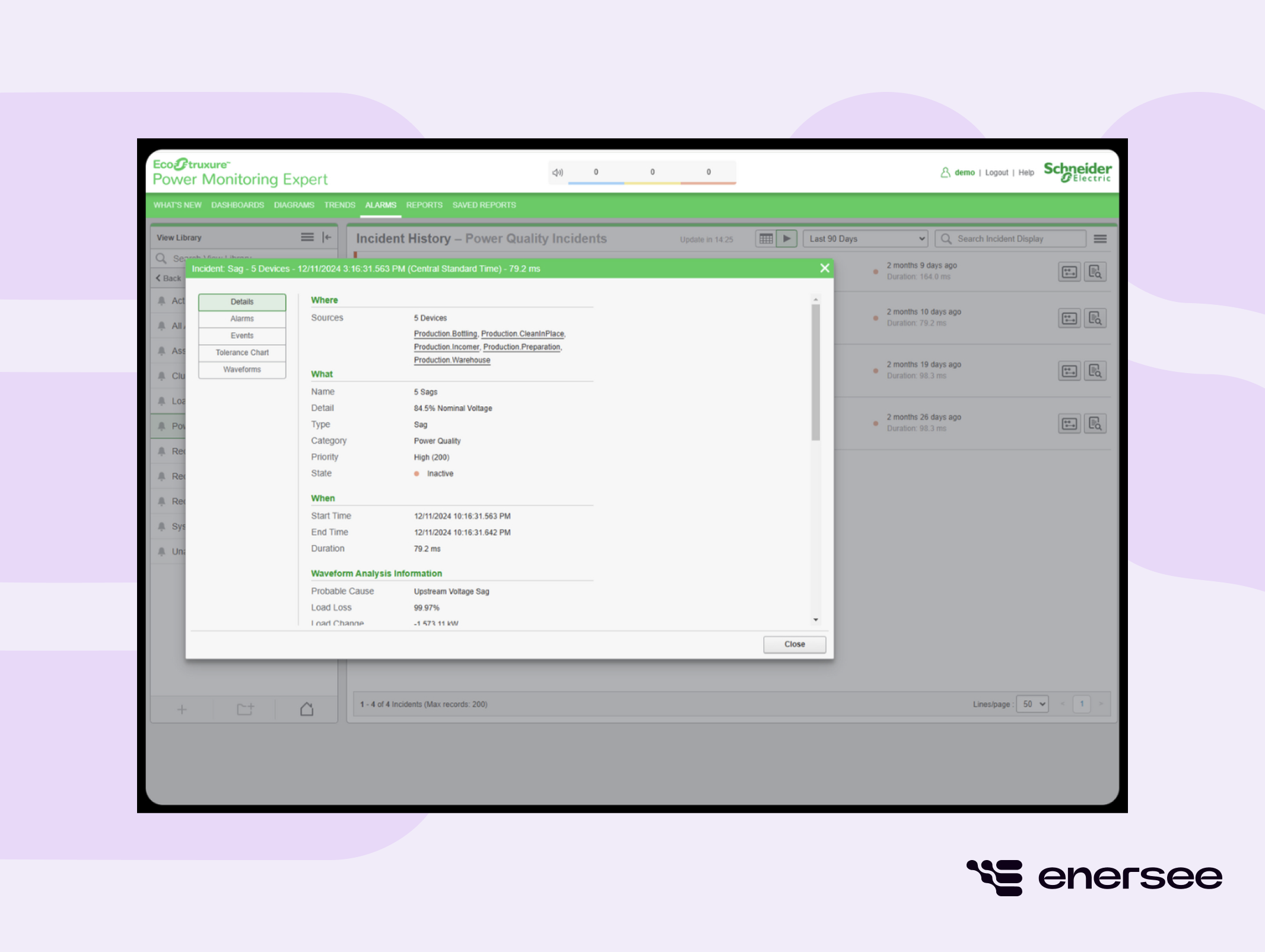
Manufacturing facilities, hospitals, and other data centers can waste a lot of energy without the right tools. EcoStruxure Power Monitoring Expert offers high-resolution monitoring, system-level insights, and power quality analysis.
It comes with IoT connectivity and a plug-and-play architecture that make it easy to use for most teams. What can it really do?
- Collects data from connected equipment and sensors in real-time.
- Identifies harmonics, imbalances, and electrical abnormalities, so you can correct them before wasting thousands of euros.
- Supports fault detection and predictive maintenance.
- Can easily connect with the wider EcoStruxure ecosystem, making it a great EMS for those who already use Schneider’s automation and control systems.
What do users say? “It allows you to establish a wide range of applications. It is simple to use, very intuitive. The Graphics are very nice. Expandable PLC-s allows you to connect a lot of different sensors, relays. Compact models have static number input output devices but for small projects is just enough.”
On the downside, some say that despite its power, some functionalities, such as generating and editing reports, are less flexible than expected. And since it is a tool built with very large industrial sites in mind, it can be costly and complex, and simply not the right choice for those managing smaller spaces.
5. Energis.Cloud — Energy management system for operational energy visibility and cost control
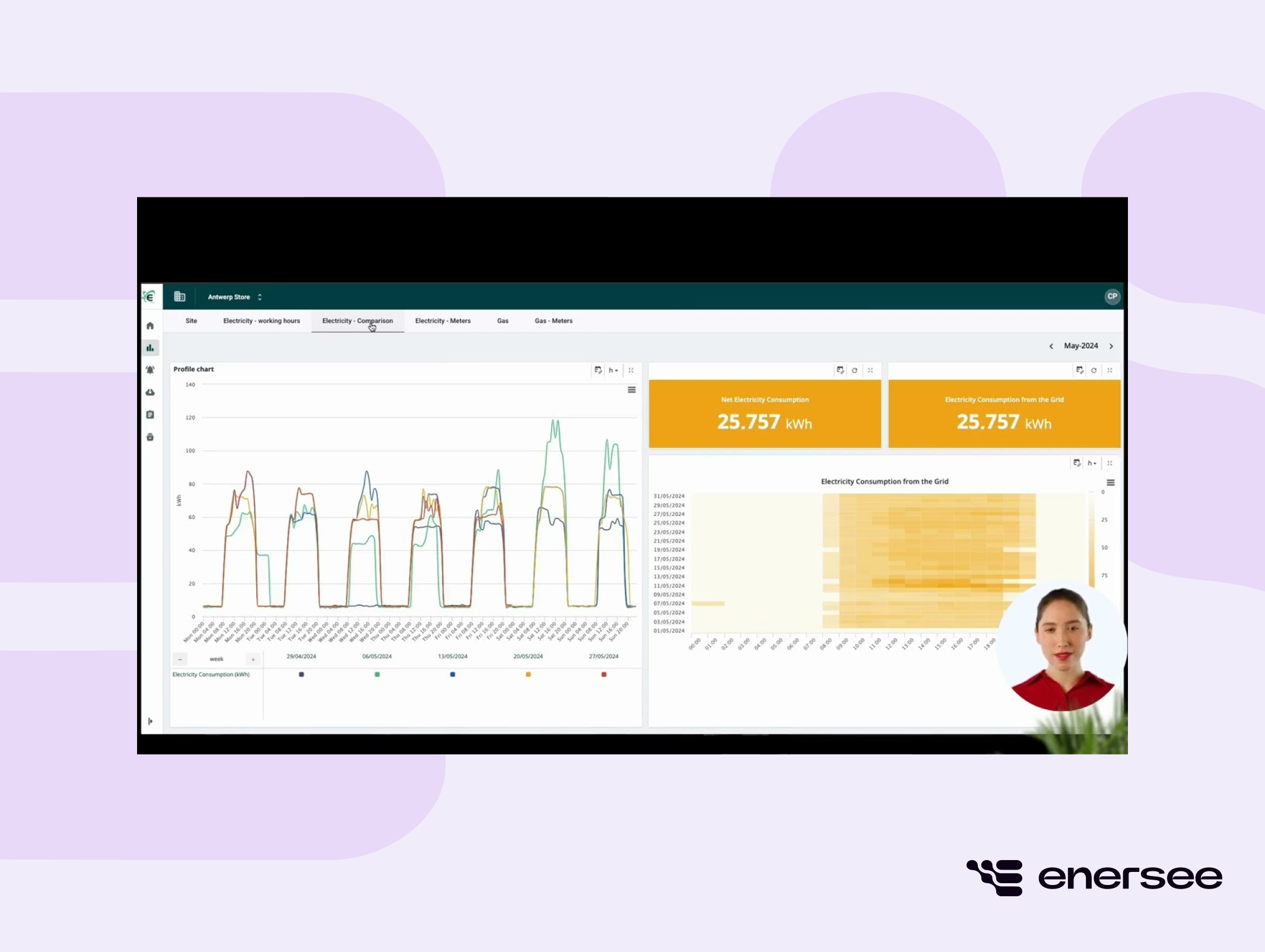
Sometimes you need EMS software that will give you more visibility into your energy and utility data. Energis.Cloud helps you identify anomalies, monitor energy performance, and measure savings. It brings together information from meters, building systems, and utility invoices into one centralized dashboard.
It can also do things like:
- Integrate data from IoT sensors, BMS, meters, and utility bills without complex setup.
- Flag unusual patterns, contract breaches, or power peaks before they become costly.
- Track self-consumption from solar or other distributed energy sources.
- Compare sites and assets, highlighting deviations from expected consumption.
Its real-time data import feature is one of the things users love the most, according to reviews on platforms like G2: “The process of adding data and generating various visually pleasing views is quick with this tool. Additionally, it is a beneficial tool for importing data in real time.”
Energis.Cloud is all about simplicity, so it is ideal if you’re seeking something without heavy IT integrations or AI analytics.
This advantage, though, can also be its biggest disadvantage. The lack of complex analytics, especially when compared to tools like Enersee, can make it less ideal for those who work with large portfolios or have to quickly sift through a lot of data.
Similarly, if you’re looking for enterprise-scale automation or deep predictive analytics, you’ll need to customize the product or use another EMS alongside it.
Why the right energy management system matters now more than ever
Whether you’re managing a handful of buildings or hundreds of them, the era of working without an energy management system is gone.
The market offers a wide variety of solutions, each with their strengths and weaknesses. Brightly is great for small-scale organizations. MRI Energy connects energy data with property management, while Enersee will be perfect for data-driven organizations and large portfolios in markets like retail, education, logistics, healthcare, and more.
Platforms like Enersee, which can interpret all the data, regardless of its source, are the ones that are stepping ahead.
The real advantage lies in finding a system that fits your operations and decision-making style. For many, that means choosing a platform that can adapt to multiple data sources, uncover hidden inefficiencies, and always keep energy performance visible.
FAQs
1. What is the main purpose of an energy management system?
An energy management system helps organizations monitor, analyze, and optimize energy consumption across assets, enabling cost reduction and sustainability performance improvements.
2. How does an energy management system use AI?
AI enhances data analysis, detects anomalies, forecasts energy demand, and recommends optimization strategies, improving both efficiency and accuracy.
3. Is an EMS suitable for small businesses?
Yes, scalable cloud platforms like Enersee or Brightly offer modular versions suitable for smaller portfolios or single-site operations.
4. How much does an enterprise EMS cost?
Pricing varies widely. Some EMS tools offer subscription models starting at a few hundred euros per site per year, while others offer enterprise contracts with custom integrations.
Written by
Anastasiia Andriiuk
and

